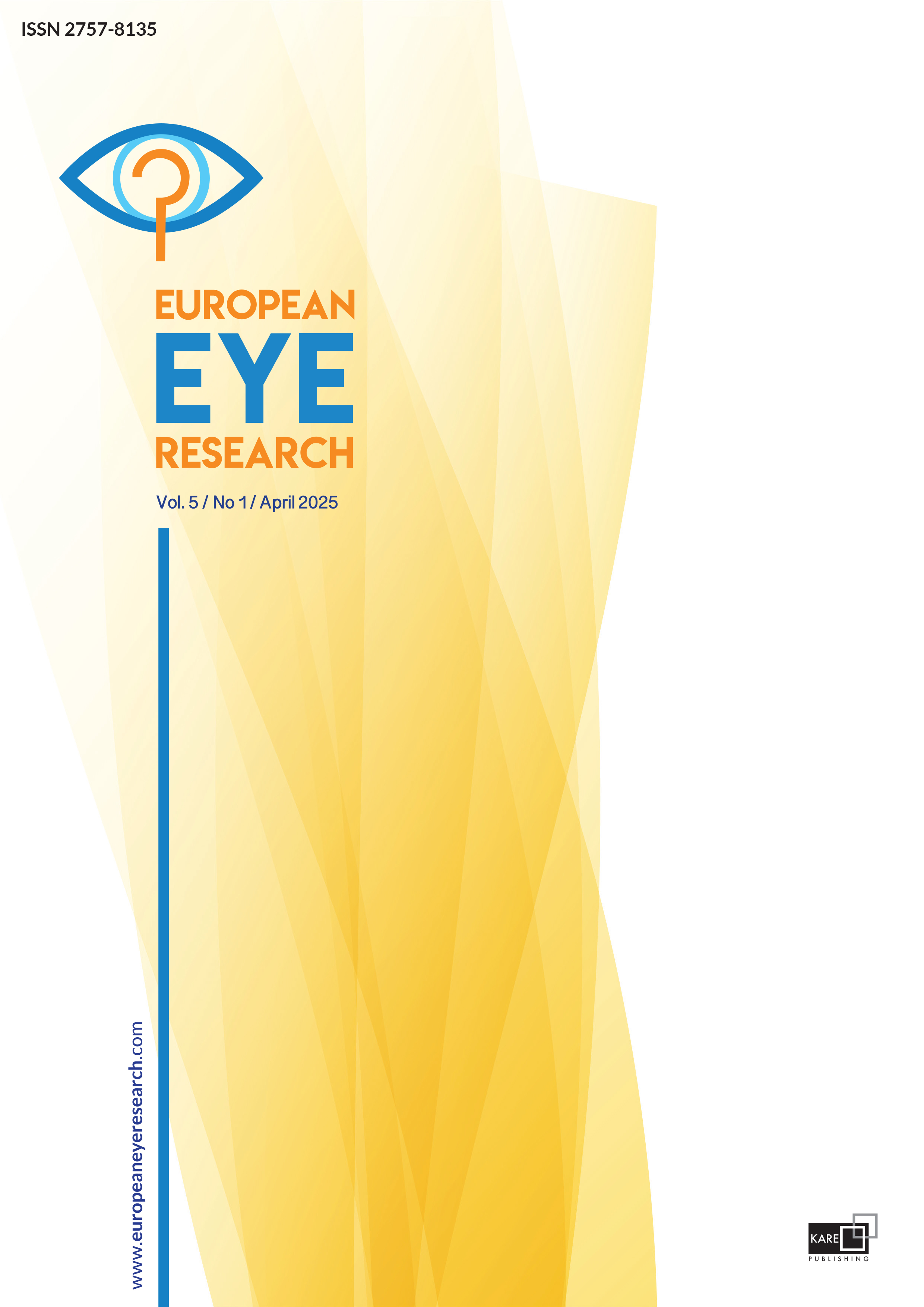

The characteristics of pseudoexfoliation glaucoma in Ankara, the capital of Turkey
Sirel Gür Güngör1, Ahmet Akman1, Atilla Bayer2, Ufuk Elgin3, Oya Tekeli4, Tamer Takmaz5, Umit Ekşioğlu6, Alper Yarangumeli7, Tarkan Mumcuoğlu8, Zeynep Aktaş9, Ahmet Karabulut7, Özlem Evren Kemer71Department of Ophthalmology, Baskent University Faculty of Medicine, Ankara, Turkey2Department of Ophthalmology, Dunyagoz Hospital, Ankara, Turkey
3Department of Ophthalmology, Ulucanlar Training and Research Hospital, Ankara, Turkey
4Department of Ophthalmology, Ankara University Faculty of Medicine, Ankara, Turkey
5Department of Ophthalmology, Ataturk Training and Research Hospital, Ankara, Turkey
6Department of Ophthalmology, Ankara Training and Research Hospital, Ankara, Turkey
7Department of Ophthalmology, Numune Training and Research Hospital, Ankara, Turkey
8Department of Ophthalmology, Gulhane Military Medical School, Ankara, Turkey
9Department of Ophthalmology, Gazi University Faculty of Medicine, Ankara, Turkey
PURPOSE: The purpose of the study was to study the profile, clinical characteristics, and associated ocular and systemic comorbidities of pseudoexfoliation glaucoma (PEXG) in a cross-sectional multicentric study.
METHODS: A total of 7500 eyes of 3750 subjects with glaucoma and suspected glaucoma underwent complete ophthalmic evaluation including history, visual acuity testing, slit-lamp examination, applanation tonometry, gonioscopy, and dilated examination of the optic disc and fundus between March 15, 2015, and May 16, 2015. Patients with PEXG were identified and their data were analyzed with respect to age, sex, intraocular pressure, ocular, and systemic diseases.
RESULTS: A total of 1180 eyes of 666 subjects had PEXG (mean age: 72.7±9.0 years (38–97 years). The percentage of the patients with PEXG within patients with glaucoma (4604 eyes of 2541 subjects) was 26.2%. Male-to-female ratio was 402/264 (60.3%/39.6%). One hundred and three patients (15.4%) had a positive family history. Four hundred and seventy-four patients (71.17%) had an additional systemic disease and the most prevalent comorbidities were hypertension and diabetes mellitus. Five hundred and fourteen patients (77.1%) had bilateral disease. The most common surgery performed in patients with PEXG was trabeculectomy (281 eyes; 23.8%). Six hundred and thirty-six patients (95.5%) had open angle glaucoma and 30 patients had closed angle glaucoma (4.5%).
CONCLUSION: PEXG is common in Turkey and one-quarter of glaucoma patients were found to have PEXG in this hospital-based study. In addition, with this multicentric study, we were able to document the demographic properties of PEXG in a large study population in the Central Anatolian metropolitan area.
Manuscript Language: English



